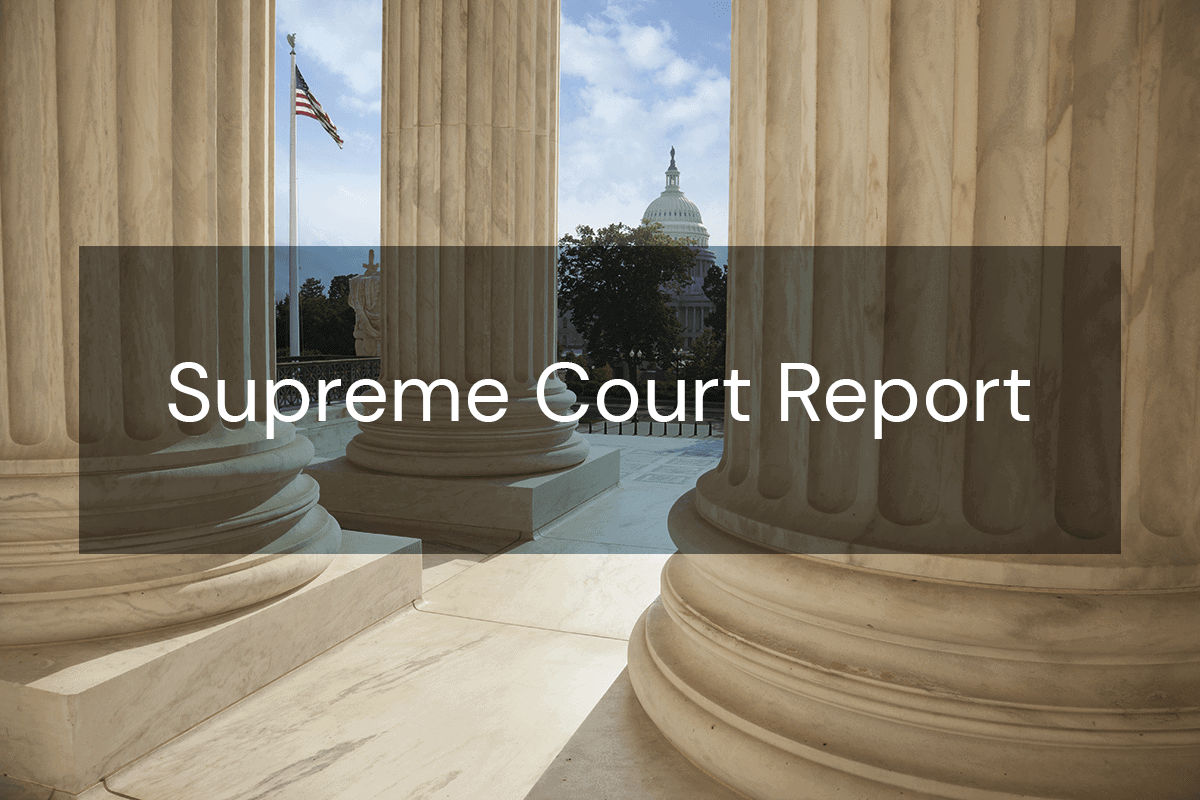-
 Director, Center for Supreme Court AdvocacyNational Association of Attorneys General
Director, Center for Supreme Court AdvocacyNational Association of Attorneys General

Volume 30, Issue 6: This Report summarizes opinions issued on February 22 and 28, 2023 (Part I); and cases granted review on February 27 and March 6, 2023 (Part II).
Case Granted Review: Consumer Financial Protection Bureau v. Community Financial Services Ass’n of America, Ltd., 22-448
Consumer Financial Protection Bureau v. Community Financial Services Ass’n of America, Ltd., 22-448. The Court will resolve “[w]hether the [Fifth Circuit] erred in holding that the statute providing funding to the Consumer Financial Protection Bureau (CFPB), 12 U.S.C. 5497, violates the Appropriations Clause, U.S. Const. Art. I, §9, Cl. 7, and in vacating a regulation promulgated at a time when the CFPB was receiving such funding.” The statute in question, the Dodd-Frank Wall Street Reform and Consumer Protection Act, authorizes the Federal Reserve Board to transfer to the CFPB the “amount determined by the [CFPB] Director to be reasonably necessary to carry out” the Bureau’s responsibilities. 12 U.S.C. §5497(a)(1). The funds are not subject to review by the House and Senate Appropriations Committees.
Respondents are two associations of companies regulated by the CFPB’s so-called Payday Lending Rule, which prohibits lenders from withdrawing funds from consumers’ bank accounts in certain situations. Respondents challenged the rule in federal district court on various statutory and constitutional grounds. Relevant here, they contended that the CFPB’s funding mechanism—through which it was receiving funds when it promulgated this rule—violates the Appropriations Clause and the separation of powers because it improperly shields the Bureau from congressional supervision. The district court granted the CFPB summary judgment on all of respondents’ claims. The Fifth Circuit affirmed in part and reversed in part. 51 F.4th 616.
The Fifth Circuit concluded that the CFPB had statutory authority to issue the challenged rule, but it also held that “the Bureau’s funding structure violates the Appropriations Clause of the Constitution and the separation of powers principles enshrined in it.” The court reasoned that the funding mechanism “takes away from Congress[] the option not to require legislative appropriations prior to expenditure.” (Internal quotation marks omitted.) According to the court, under the Appropriation Clause’s text, “an appropriation is required” to authorize spending; “[a] law” providing an agency with a funding source and spending authority “does not suffice.” The court, moreover, was troubled that the Bureau’s funding was “double-insulated” from “Congress’s purse strings” because the Board—from which the Bureau receives it funds—is funded “outside the appropriations process.” The court also distinguished other agencies that operate with similar funding mechanisms, emphasizing the “Bureau’s capacious portfolio of authority.” These problems, in the court’s view, were exacerbated by the Court’s recent decision in Seila Law, LLC v. CFPB, 140 S. Ct. 2183 (2020), which invalidated the CFPB Director’s for-cause removal protections and thereby resulted in “unification of the purse and the sword in the executive.” As a remedy, the court vacated the Payday Lending Rule.
The CFPB contends that the Fifth Circuit decision is incorrect, and the funding mechanism is constitutional. To start, the Appropriations Clause restricts the Executive from expending money without congressional authorization but does not “limit the manner in which Congress itself may exercise its authority to make ‘Appropriations’ ‘by law.’” (Quoting U.S. Const. art. I., §9, cl. 7.) Historical practice confirms this understanding, says the CFPB, as do decisions from the Court and lower courts that have recognized Congress’s plenary power to authorize appropriations. Against this backdrop, the CFPB’s funding mechanism satisfies the “classic elements of an appropriation”: Congress has “specifie[d] the manner” in which the Bureau will be funded and made “such funds available.” (Internal quotation marks omitted). The Fifth Circuit erred in concluding otherwise, argues the CFPB, particularly because it did not identify which features were necessary to constitute a constitutionally valid appropriation and because the features it did identify are not constitutionally suspect. The CFPB next maintains that, even if the Fifth Circuit was correct on the merits, its remedial holding was incorrect for various reasons, including because the court failed to conduct a severability analysis and its remedy would not cure the harm (i.e., undo improper expenditure). The CFPB adds that the court mistakenly applied the framework articulated in Collins v. Yellen, 141 S. Ct. 1761 (2021), which asks whether there was a “linear nexus” between the funding mechanism and the “promulgation of the rule.” But, says the CFPB, Collins involved a different inquiry, which here would be “whether the CFPB would not have promulgated the Payday Lending Rule if it had been funded by ‘valid’ appropriations.”
Respondents asked the Court to grant certiorari on two antecedent questions concerning the rule’s validity, but the Court declined to do. On the Appropriations Clause issue, respondents contend that the CFPB’s funding mechanism “constitutes a deliberate effort to circumvent the role the Appropriations Clause assigns to Congress in preserving the separation of powers.” The funding mechanism does so by authorizing the CFPB to determine its amount of funding without input from Congress, subject only to an “astronomical” statutory cap. Typically, however, agencies must request funding from Congress every year, providing justifications for the amounts sought. Exacerbating the problem, argue respondents, the Bureau can self-determine its funding “in perpetuity” because the funding mechanism has “no temporal limitation” and the Bureau faces no limitations on how it uses the funds. Tellingly, this mechanism is unprecedented, which, respondents submit, makes sense because if such mechanisms were accepted, “Congress could nullify the Appropriations Clause at will.” Respondents also disagree with the Bureau’s reading of the text, history, and precedent. As to the remedy, respondents submit that a severability analysis was unnecessary because the Fifth Circuit did not invalidate any part of the operative statute, and the court properly vacated the rule under Collins to redress an “‘exercise of power that [a government] actor did not lawfully possess.’”



